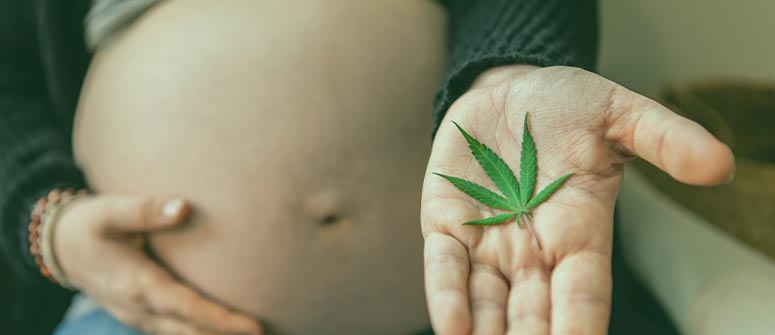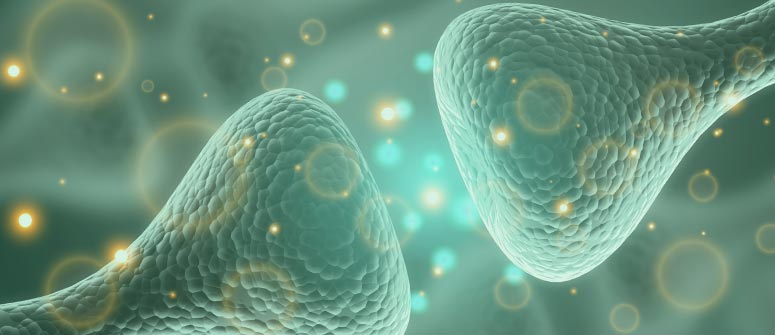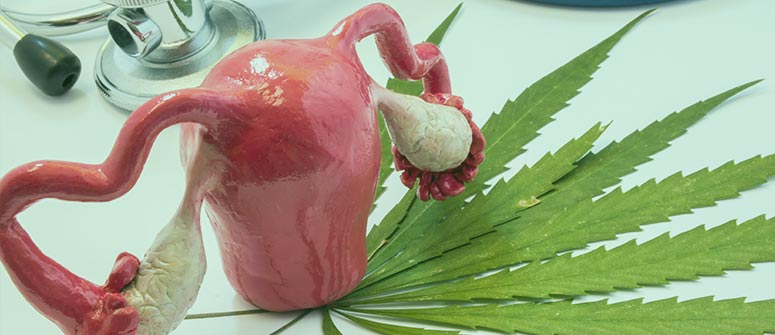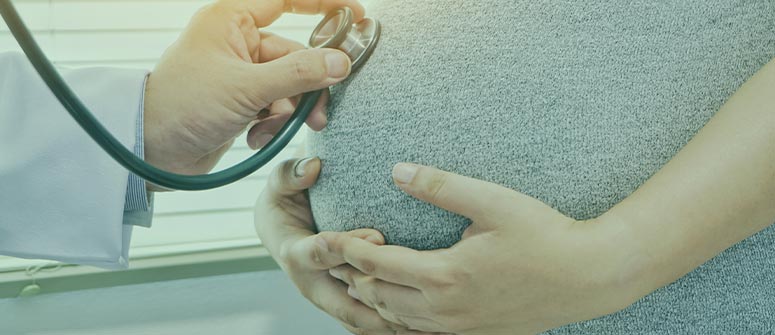The role of cannabis in women's health

Published
The future of cannabis is female! Women are fast becoming the largest demographic of cannabis consumers. Some are using cannabis products in an attempt to improve symptoms of PMS, menstrual cramps, and more, while others are using it to enhance sex or lessen menopause symptoms. But what does the science say? Find out here.
Contents:
Recent research has found that women are buying more weed. Data from Headset, a cannabis analytics firm that collects aggregate information from point-of-sale registers, found that while cannabis sales to both men and women have increased since 2020, sales to women have increased the most.¹ From early 2020 to late 2021, they found that sales to female customers shot up by 55%. Although composing roughly one-third of total sales, their market share rose from 31.7% in 2020 to 32.6% in 2021. Furthermore, a 2022 report by Eaze uncovered that of the new customers who consumed cannabis in 2021, 48% were female and 52% were male.² Women are fast closing the gap of cannabis consumption.
Despite current scientific progress into the benefits of cannabis, verified data concerning its effects on specific women's health issues remains scant. This has not prevented women from using it, though. Many female cannabis proponents claim to use weed to ease symptoms of PMS, menstrual cramps, and mood swings, while others use it in hopes of enhancing sex or improving menopause symptoms. Companies have taken note of this, and today many cannabis products—from infused Epsom salts to edibles—are hitting the market that are explicitly targeted at women.
Below, we cover the history of cannabis use among women, and the potential role of cannabis constituents in women’s health and wellness.
The history of cannabis in women’s health

While medical science may just now be getting closer to unravelling the therapeutic potential of cannabis, its use in women's health is far from a new phenomenon. Humans have cultivated and used cannabis for thousands of years, including for purposes related to sexual health and childbirth.
In traditional Chinese medicine (TCM), records dating back to 4000 BCE indicate that hemp seeds were used for uterine prolapse, aiding childbirth, and promoting lactation. Also, crushed seed kernels and root concoctions were used for postpartum haemorrhage, retained placenta, and other postpartum difficulties and menstrual disorders.
Meanwhile, Egyptian medical texts dating from 1500–3000 BCE describe a preparation of cannabis mixed with honey applied vaginally to aid childbirth. In Mesopotamia, ancient stone tablets dating to 2000 BCE report mixing cannabis, saffron, and mint in beer for "difficult childbirth".
Moving to the common era, in the 9th century, the first Arabic medical doctrines describe using a mix of inhaled cannabis seeds and herbs to calm uterine pain and prevent miscarriage. Hemp seed oil was further used to pacify uterine tumours and as a uterine relaxant. Furthermore, an 11th-century English manuscript describes cannabis as a remedy to reduce mastitis pain and swelling in the breasts, while 13th-century Italian and Roman manuscripts indicate a similar topical use.
While certainly not all of these applications would stand up to modern Western scientific scrutiny, examining these historical uses highlights that cannabis has long been considered an important tool in women's health by various cultures around the globe.
Popular cannabis administration methods among women

Cannabis is big business. Many people, of all genders, incorporate it into their daily routine as a recreational and/or holistic substance. The range of products is vast, and there are many ways it can be taken. Among women, the following product categories appear to be the most popular.
Cannabis flower/extracts
- Various forms are available, including cannabis flower, hash, shatter, and rosin
- Easy to tailor your dose when smoking or vaping
- Quick and effective
Oils and tinctures
- These formulas infuse cannabis extract with an oil or alcohol base
- Just a few drops under your tongue will do the trick
- A fast-acting and discreet method
Capsules
- An encapsulated blend of cannabinoids, vitamins, and botanicals
- Often taken daily with water and food
- Easy to add to your routine for steady consumption
Edibles and beverages
- Offers a measured dose of cannabinoid extract that may provide extended effects
- Taken as required, often at set times and at a specific dose
Topicals and transdermal patches
- Topicals apply local effects in/on the skin in the form of creams, bath bombs, body oils, and more
- Patches deliver measured doses of cannabinoids through the skin into the bloodstream
- Bypass digestion and inhalation
CBD-infused tampons
- Tampons are coated in CBD
- Potentially soothe painful menstrual cramps
- A discreet and safe alternative for period discomfort
The role of the ECS in women’s health

Since its discovery in the late 20th century, the endocannabinoid system (ECS) has been elucidated as a key regulatory system—one that oversees numerous physiological processes and functions. The primary role of the ECS is to keep our bodies in a state of balance.
The ECS has been researched in animal and human studies for its effect on several aspects of the female reproductive process, where it may substantially impact fertility, reproduction, and endocrine function. Recent evidence shows that cannabinoid receptors are present in the cells of the reproductive system, including endometrial stromal cells, ovaries, and sperm cells.³ The endocannabinoids (naturally produced signalling molecules) anandamide (AEA) and 2-arachidonoylglycerol (2-AG) are crucial to success in fertilisation, embryo implantation, placental development, and pregnancy outcome, among other processes. Therefore, direct links can be drawn between the ECS and women’s health, which opens up the door to cannabis as a possible therapeutic agent.
While our natural endocannabinoids do their best to keep things running smoothly, many are turning to phytocannabinoids (cannabinoids from plants, i.e. cannabis) to activate the ECS in potentially more profound and beneficial ways. Whether the result of a possible clinical endocannabinoid deficiency or simply to boost an already functioning ECS, cannabinoids like THC and CBD are being studied for their impact on all manner of health conditions affecting women.
This includes studies on cannabinoids and depression, anxiety, muscle and joint aches, osteoporosis, gastrointestinal discomfort, weight gain, cognitive impairment, sleep disturbances, and sexual dysfunction or pain—all of which can be associated with conditions such as premenstrual syndrome (PMS), premenstrual dysphoric disorder (PMDD), menopause, and endometriosis.
While it's yet unreasonable to claim that any cannabis compound or product "cure" a headache, cramps, or any other medical issues for which it has not been officially indicated, there is value in anecdotal and preliminary scientific accounts on the effects of cannabis-derived cannabinoids for women’s health.
CBD for women’s health
CBD may impact certain common challenges that many women face today, including hormone imbalance, menopause, menstrual cramps, and mood disorders. The cannabinoid's potential role in balancing the ECS is believed to be one reason for this, though CBD is thought to have numerous mechanisms of action. One of the most crucial, however, appears to be its ability to inhibit the enzyme FAAH. This is the enzyme that metabolises AEA (the so-called "bliss moelcule"); therefore, CBD is able to temporarily increase levels of this endocannabinoid in the brain, resulting in potentially beneficial effects.
THC for women’s health
Some studies claim that women react differently to THC than men, likely due to the sex hormones oestrogen and progesterone, and changes that occur during the menstrual cycle.⁴ Such studies show that drug sensitivity appears to spike during ovulation due to peaked oestrogen levels. Other research suggests that women have more endocannabinoids, and that their endocannabinoid receptors are more sensitive.⁵ THC has already been shown to increase feel-good neurotransmitters like dopamine and serotonin, and may help to soothe pain and encourage sleep. Furthermore, the cannabinoid has been shown in tests to dilate constricted blood vessels, increasing blood flow to various organs.
Cannabis and gynaecology

A 2021 survey of US women 18 years and older sought to assess the use of and attitudes toward cannabis for treating gynaecological conditions. Published in the Journal of Women’s Health, it found that most participants would consider using cannabis for wellness and to ease symptoms of various gynaecological conditions.⁶ Overall, respondents with a history of cannabis use were more likely to report a willingness to use cannabis for all gynaecological diseases. Still, many who reported never using cannabis were also willing to try it. So, what is cannabis being used for in gynaecological health, and what role could it play?
Period pain
The menstrual period is when the uterus contracts to expel the lining it has formed in preparation of fertilisation. Hormonelike substances (prostaglandins) trigger uterine muscle contractions. Conditions including endometriosis or uterine fibroids can also cause menstrual cramps.
Nonsteroidal anti-inflammatory drugs (NSAIDs) such as ibuprofen are commonly used to treat menstrual cramps, by blocking prostaglandin production. Cannabinoids like THC and CBD do not affect prostaglandin production, so it is unclear how they could ease symptoms of menstrual cramps. One possibility is that THC's euphoric and relaxing effects could reduce the perception of pain. Other studies point to the release of dopamine and potential immunomodulatory effects of cannabinoids as displaying potential against the pain associated with cramping. However, generally, research suggests that any benefits in this domain are limited.⁷
Premenstrual syndrome (PMS)
It's not fully understood why women get PMS, though it could be the result of changes in hormone levels during the menstrual cycle. PMS is the term for the symptoms women may experience in the weeks before their period. Common symptoms include mood swings, food cravings, fatigue, insomnia, bloating and tenderness, abdominal pain, and greasy skin and hair. In this regard, THC and CBD are anecdotally used by PMS sufferers to lift the mood and restore calm, in turn potentially easing symptoms such as mood swings, and potentially even cramping and cravings.
Endometriosis
Endometriosis occurs when tissue in the womb's lining grows in other places, such as the ovaries and fallopian tubes. Severity can vary significantly, and symptoms include abdominal pain, heavy periods, pain during sex, and difficulty conceiving.
Some medical studies indicate a dysfunction in the endocannabinoid system (ECS) in certain people with endometriosis. Therefore, it is believed that modulating the ECS, including with cannabinoids such as THC and CBD, may affect some aspects of endometriosis symptoms.⁸ Anecdotally, cannabis appears to be popular among individuals experiencing symptoms such as pelvic pain, gastrointestinal symptoms, and mood, with effectiveness differing based on the method of ingestion. However, more thorough and extensive clinical trials investigating the tolerability and efficacy of cannabis for endometriosis symptoms are urgently needed to clarify matters.
Sexual dysfunction or pain
Women's health conditions may also lead to decreased libido and pain during intercourse (dyspareunia). Some research has found that women who consume low amounts of cannabis before sexual intercourse may experience increased libido and orgasm and decreased vaginal pain.⁹ THC is known to dilate blood vessels and lower inhibitions, which may result in increased libido and confidence. CBD might also offer mental respite during or after sex, allowing you to focus more on intimacy without the interference of spasms, pressure, and cramping.
Menopause
Menopause is what happens when periods stop due to lower hormone levels. This usually occurs between the ages of 45 and 55, although it can happen at an earlier age or because of major surgery or cancer treatments. Menopause can cause symptoms like anxiety, mood swings, brain fog, hot flushes, and irregular periods.
Many menopausal women who self-administer cannabis do it to help with anxiety and depression, sleep disorders, and sexual discomfort. THC is generally considered to have a relaxing effect, making it more suited to easing stress. At greater concentrations, CBD may induce sleepiness; however, smaller doses may encourage alertness and help improve motivation. So far, no medical proof exists to support CBD's use to relieve sexual discomfort.
Cannabis and obstetrics

Finally, we will examine the relationship between cannabinoids and obstetrics—specifically, how cannabis might impact pregnancy and breastfeeding.
Pregnancy
Though some anecdotal accounts may vouch for using cannabis to ease pregnancy side effects such as nausea and morning sickness, much of the current research highlights that exposure to phytocannabinoids can affect the viability of pregnancy and the outcome and the baby's cognitive development.
Medical studies have explicitly identified that cannabis use during pregnancy can reduce birth weight, head circumference, and gestation length. Excessive exposure to marijuana in the uterus is also associated with childhood seizure disorders, increased behaviour and attention deficit among preschool children, and restricted foetal growth.³
If you are thinking of using cannabis during pregnancy, you should always speak to a healthcare professional first.
Breastfeeding
Breast milk is tailor-made for babies, containing all the necessary vitamins and minerals. Breastfeeding offers protection from infections and helps to improve your baby's overall health; it can also reduce the risk of SIDS (sudden infant death syndrome), leukaemia, and childhood diabetes.
Breastfeeding women may use cannabis for many reasons, but here too there is a potential risk to the baby’s health. The chemicals in cannabis products, including CBD oil, do pass into breast milk, though there's little evidence on how it may affect babies. With more research needed to determine the safety of using cannabis constituents while breastfeeding, expectant mothers are advised to take a cautious approach and seek safer alternatives. Once again, if you are considering using cannabis while pregnant or breastfeeding, speak to a healthcare professional first.
The future of cannabis in obstetric and gynaecological health

Current research and anecdotal evidence surrounding cannabis and women's health suggests a need for further exploration and clinical guidelines. Many women are already using cannabis for gynaecological conditions or are asking for more information about cannabis as a treatment. However, we need more comprehensive information on the impact of using cannabis in gynaecology, particularly when it comes to pain, before we can hope to offer women the answers and natural treatment options they deserve.
References:
1. Exploring cannabis consumer trends & demographics in 2021 | Headset. www.headset.io. Accessed October 7, 2022. https://www.headset.io/industry-reports/exploring-cannabis-consumer-trends-demographics-in-2021
2. Eaze Insights | The State of the Cannabis Industry in 2022. Eaze | Cannabis Delivery. Accessed October 7, 2022. https://www.eaze.com/article/eaze-insights-state-of-cannabis-2022
3. Ezechukwu HC, Diya CA, Shrestha N, Hryciw DH. Role for endocannabinoids in early pregnancy: recent advances and the effects of cannabis use. American Journal of Physiology-Endocrinology and Metabolism. 2020;319(3):E557-E561. doi:10.1152/ajpendo.00210.2020
4. Are females more susceptible to effects of marijuana? www.medicalnewstoday.com. Published September 3, 2014. Accessed April 5, 2022. https://www.medicalnewstoday.com/articles/281998
5. Sex, drugs and estradiol: Why cannabis affects women differently. ScienceDaily. Accessed October 7, 2022. https://www.sciencedaily.com/releases/2018/10/181026102627.htm
6. Han L, Alton K, Colwill AC, Jensen JT, McCrimmon S, Darney BG. Willingness to Use Cannabis for Gynecological Conditions: A National Survey. Journal of Women’s Health. 2021;30(3):438-444. doi:10.1089/jwh.2020.8491
7. Allan GM, Finley CR, Ton J, et al. Systematic review of systematic reviews for medical cannabinoids. Canadian Family Physician. 2018;64(2):e78-e94. Accessed January 16, 2022. https://www.ncbi.nlm.nih.gov/pmc/articles/PMC5964405/
8. Sinclair J, Collett L, Abbott J, Pate DW, Sarris J, Armour M. Effects of cannabis ingestion on endometriosis-associated pelvic pain and related symptoms. Raimondo D, ed. PLOS ONE. 2021;16(10):e0258940. doi:10.1371/journal.pone.0258940
9. Lynn BK, López JD, Miller C, Thompson J, Campian EC. The Relationship between Marijuana Use Prior to Sex and Sexual Function in Women. Sexual Medicine. 2019;7(2):192-197. doi:10.1016/j.esxm.2019.01.003
.jpg)
.jpg)

.jpg)